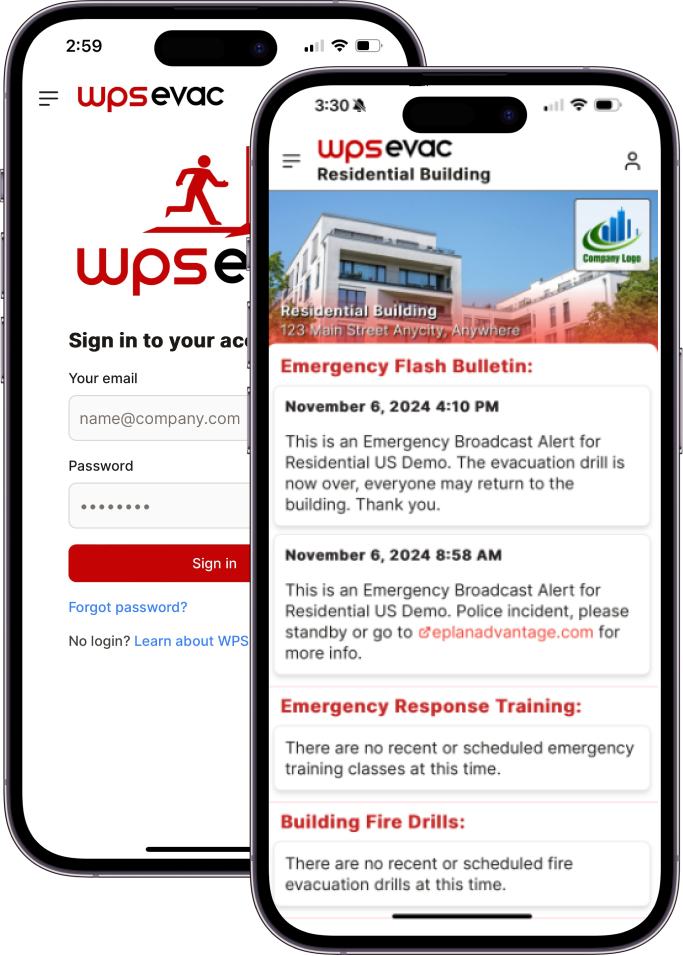
In emergencies, fear, confusion, and uncertainty can overwhelm building occupants. Without clear guidance and visible leadership, these emotions can escalate into panic and lead to harmful decisions. Establishing a sense of security is crucial for several reasons:
Minimizing Panic: Fear often leads to irrational behavior. Clear communication and visible signs of control help occupants remain calm and follow instructions.
Protecting Lives: A calm and orderly evacuation ensures that people exit your building safely, reducing the risk of crowding or injuries.
Preventing Misinformation: During emergencies, rumors or misunderstandings can spread quickly. Effective communication ensures that accurate information reaches occupants.
Demonstrating Leadership: Projecting confidence and control reinforces your role as a trusted authority in a time of crisis.
Strategies for Establishing Security During Emergencies
Communicate Clearly and Promptly
Clear and timely communication is the cornerstone of effective emergency management. Occupants need to understand the nature of the emergency, their required actions, and that the situation is under control. To convey these points, you’ll need to leverage both real-time alerts and audible announcements. Here are a few examples:
- Real-Time Alerts: Send notifications via SMS, email, or push notifications to keep tenants informed.
- Audible Announcements (if applicable): Use your building’s PA system to provide verbal updates, ensuring everyone receives the same, accurate information.
Exhibit Visible Leadership
During an emergency, people naturally seek guidance from those in charge. Your presence on-site or through communication channels demonstrates control, authority, and a sense of assurance. Assign staff members to high-visibility roles, such as directing evacuees or managing entry points, to enhance this effect in your building.
Utilize Technology To Provide Real-Time Information
Digital tools can significantly enhance your ability to manage emergencies. Apps like the WPS Evac App allow property managers to:
- Monitor evacuation statuses with features like eNotifire.
- Provide evacuation routes and map to the recommended building assembly point.
- Track who needs assistance, ensuring help is dispatched promptly.
- With accurate and immediate information, you can respond more effectively and keep occupants informed about ongoing developments.
Ensure Staff Are Well-Trained for Building Emergencies
Confidence and control stem from preparation. Your team should receive regular training on:
- Emergency response protocols specific to your property.
- Effective communication with tenants during high-stress situations.
- The use of emergency tools like fire suppression systems or evacuation software.
- Regular drills and training sessions empower your team to handle emergencies calmly and effectively.
Provide Reassurance During and After the Event
Reassure occupants that safety measures are in place and the situation is being managed. During the incident, use reassuring language such as:
- “The emergency is under control. Please proceed to the nearest exit as instructed.”
- “Emergency services are on-site and responding to the situation.”
- After the event, follow up with a debrief to ensure tenants feel supported and informed about what happened and any next steps.
Conclusion
Emergencies test the readiness and leadership of property managers, but by establishing a sense of security, you can mitigate chaos and protect lives. Clear communication, visible leadership, and the right tools are essential to creating a calm and controlled response.
If you’re ready to enhance your emergency preparedness, consider how tools like the WPS Evac App can help you manage crises with confidence and efficiency. Contact us today to learn more about empowering your team and keeping your property safe.


